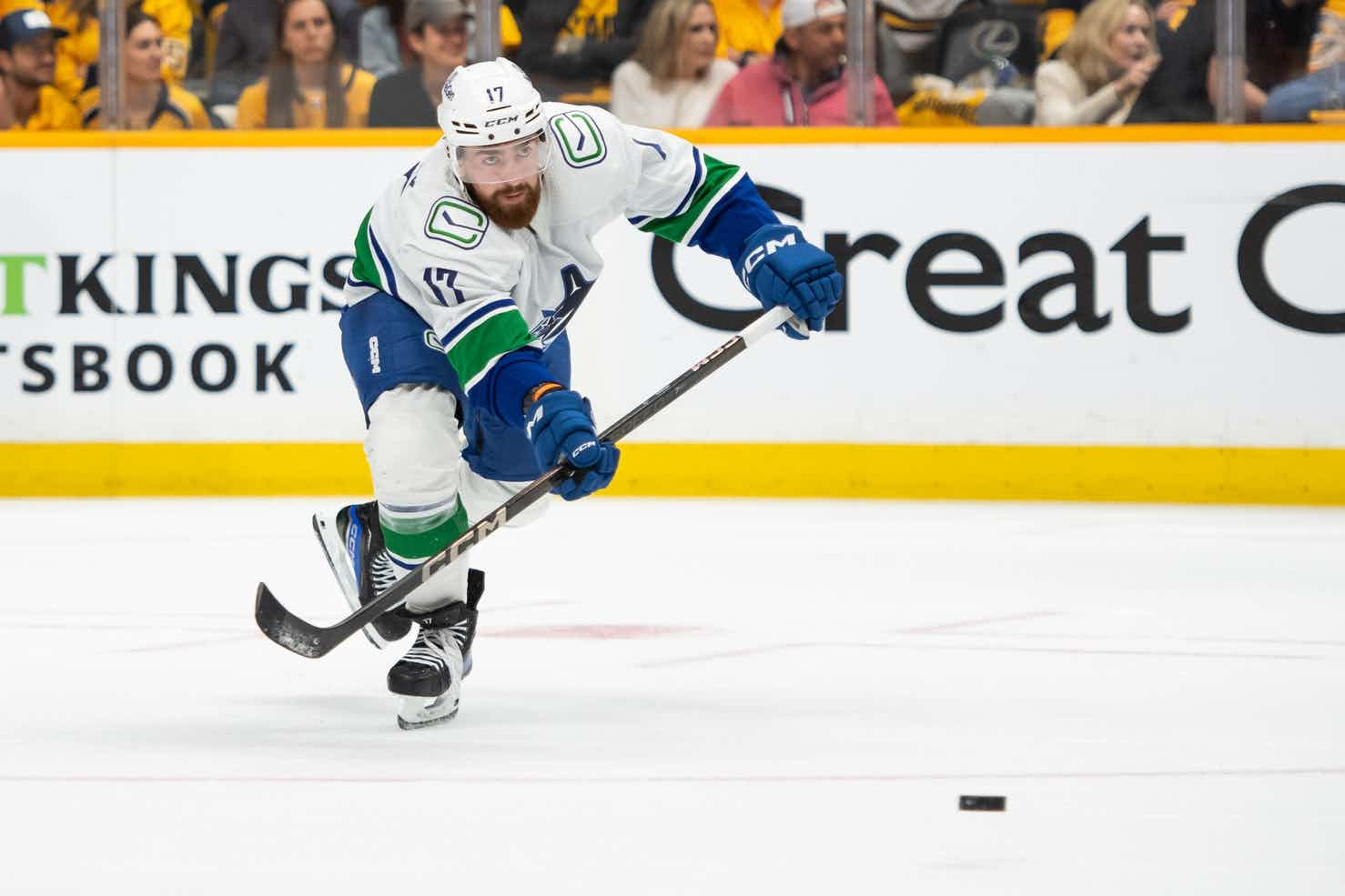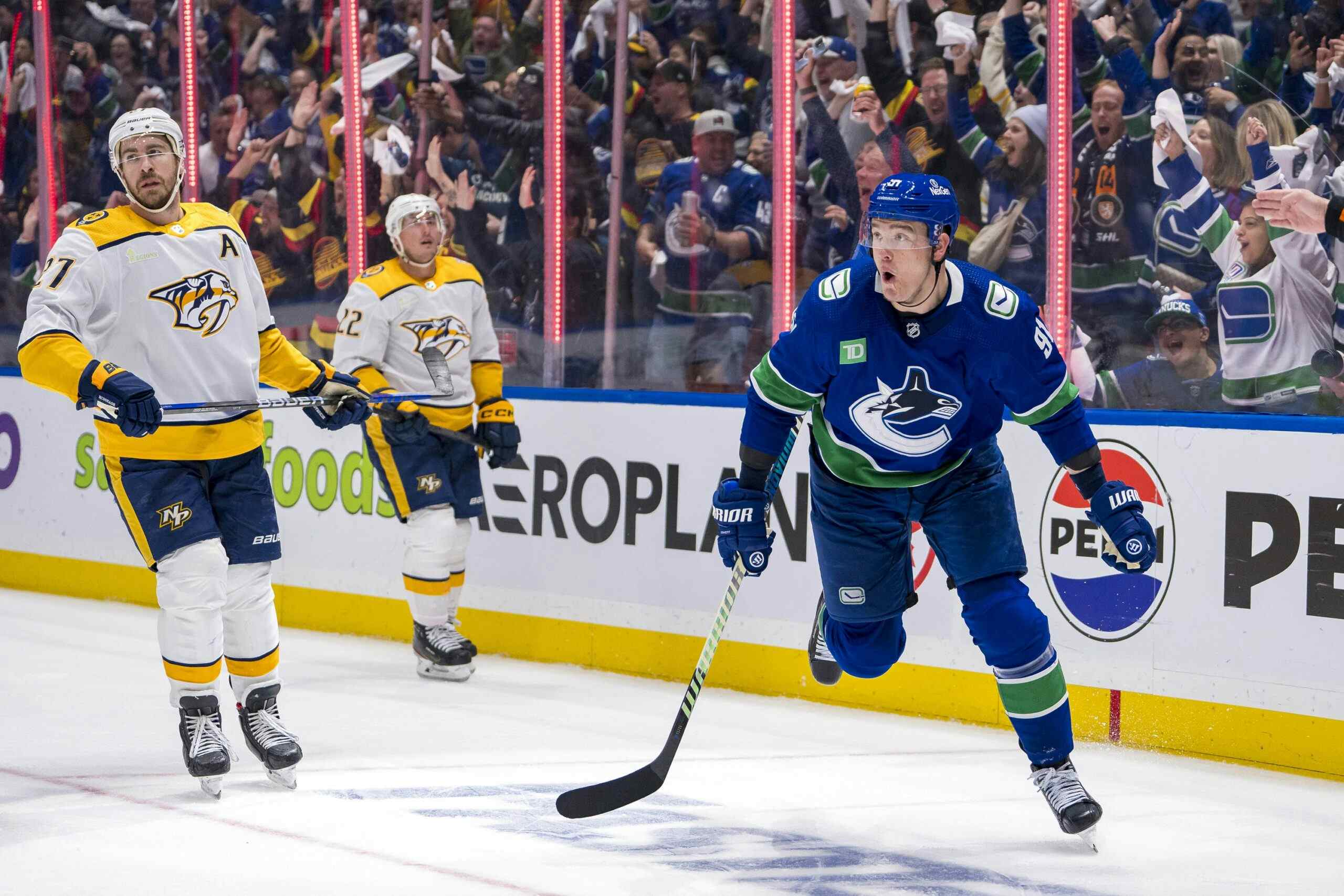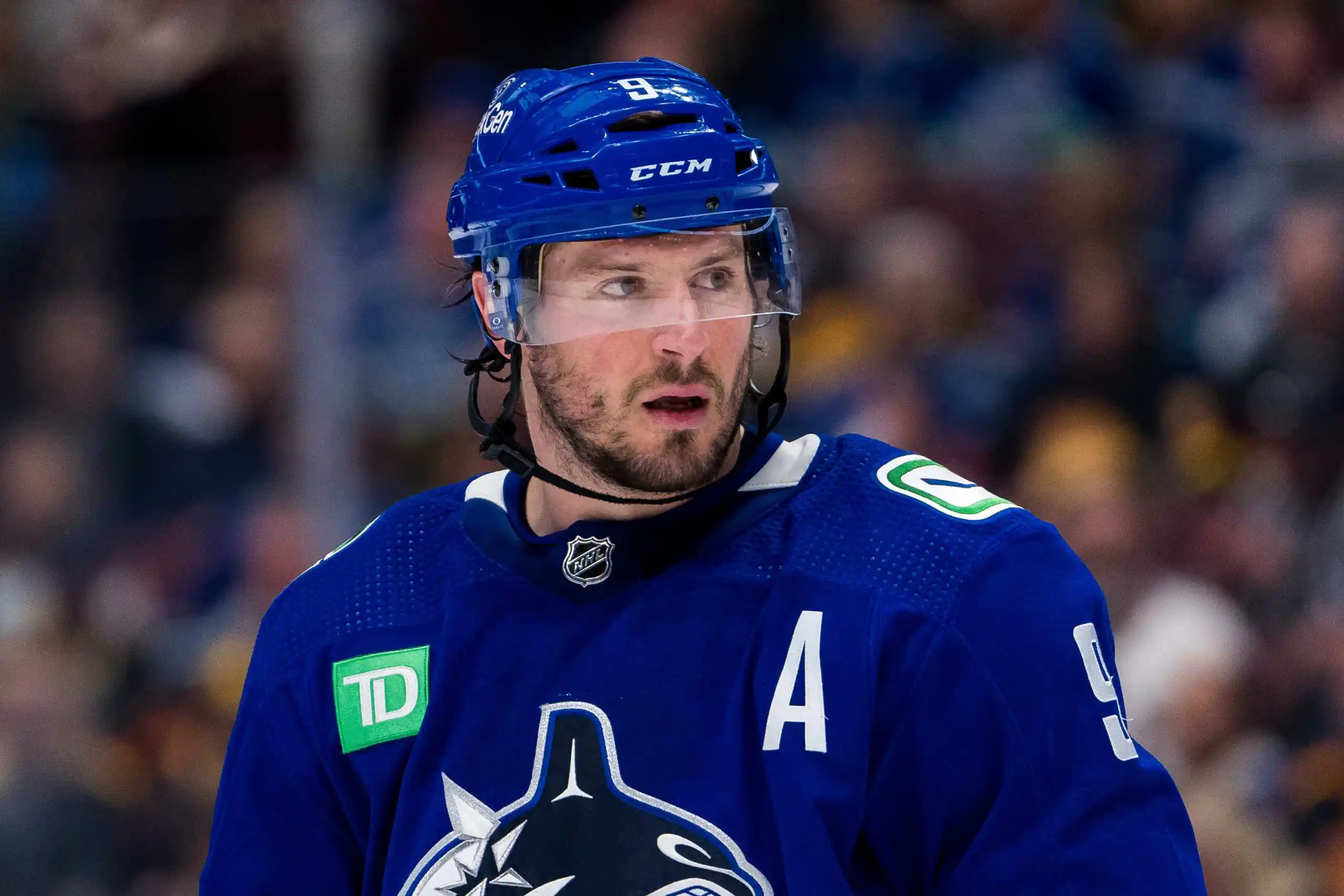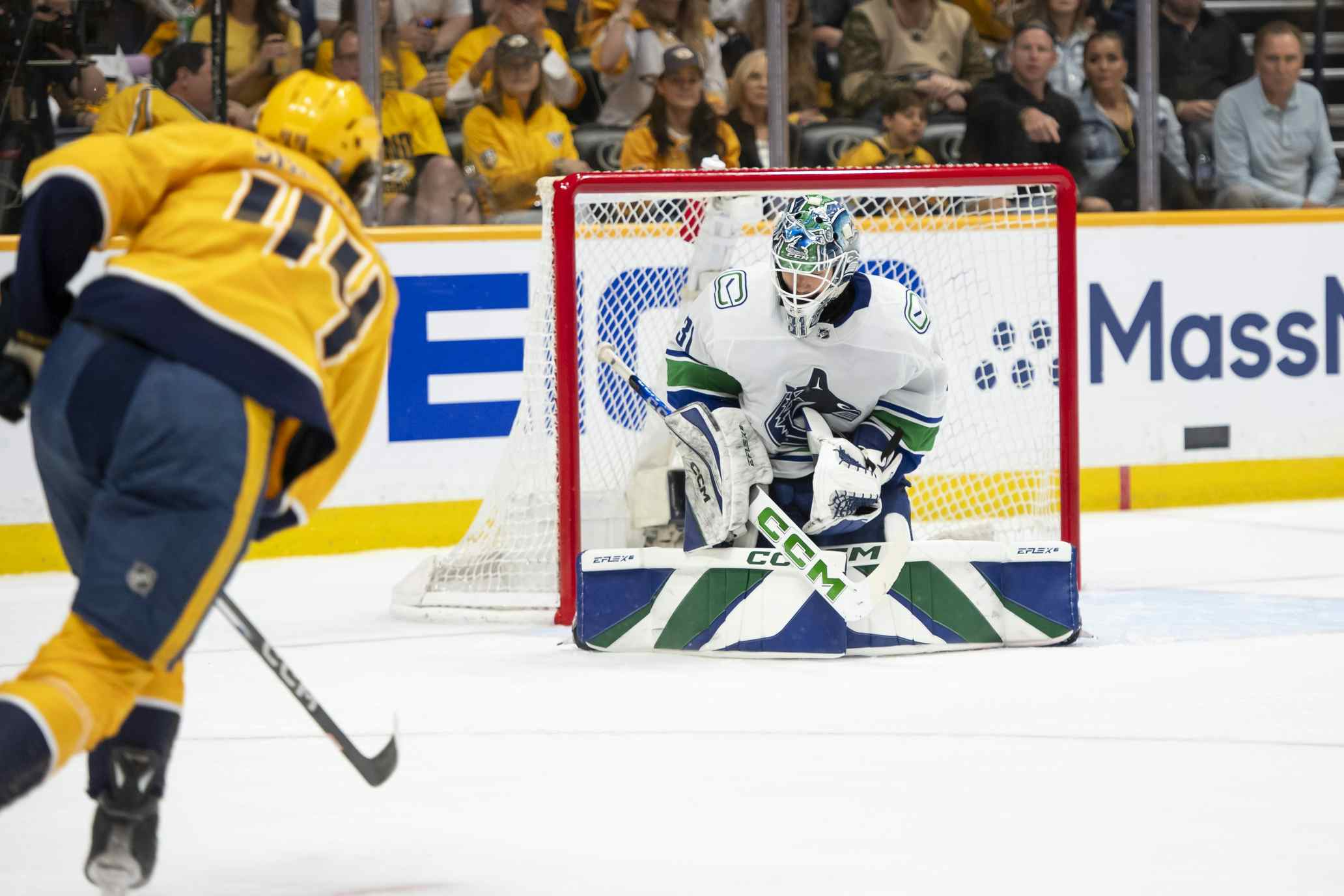Deep Dive: How will the Canucks’ cap situation look once they re-sign their pending UFAs?
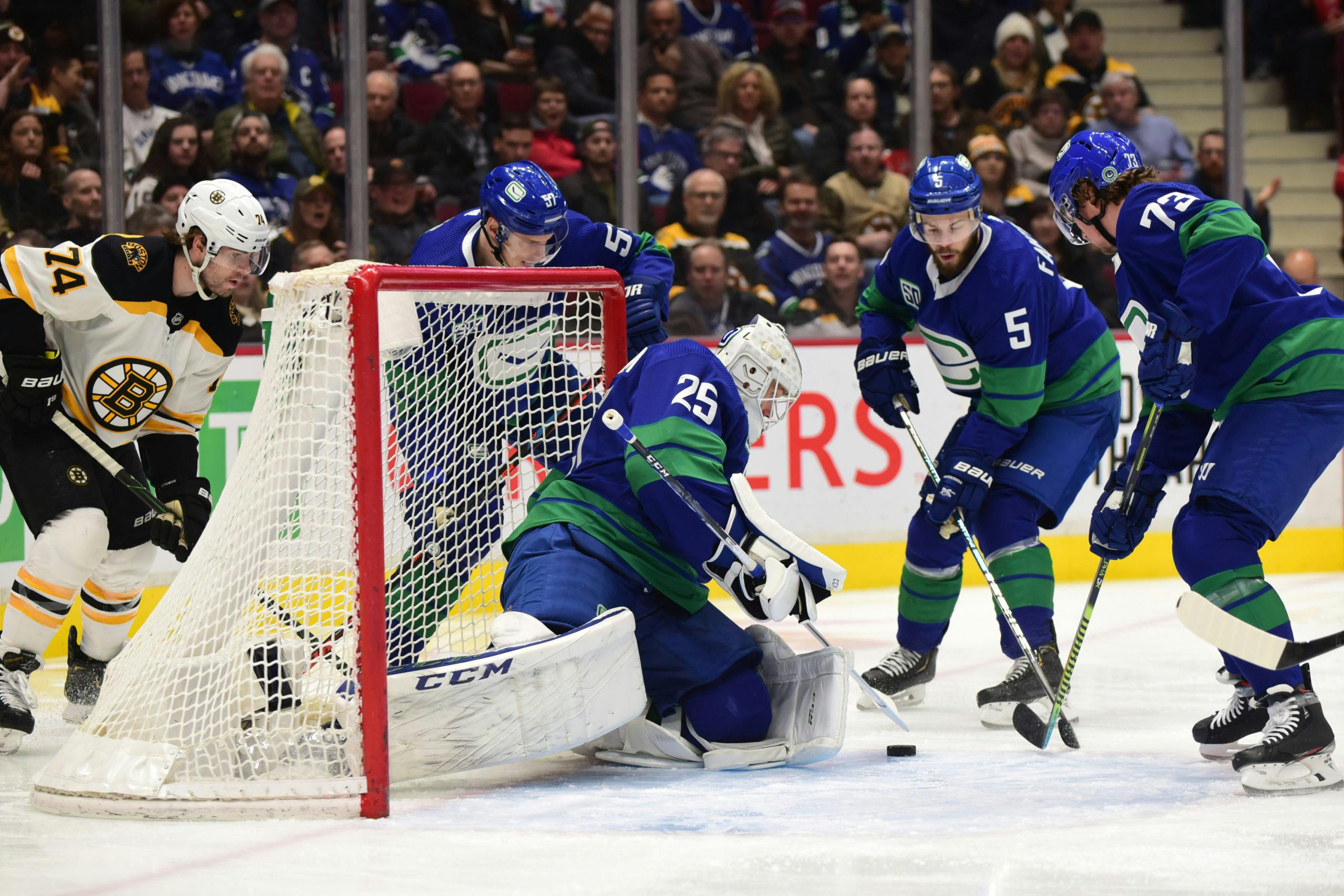
Can you smell it? It’s the familiar aroma of NHL free agency, only this year, it’s joined by the classic sweet and musky smell of leaf piles, pumpkin spice everything, and for a while there, smoke too. That damn smoke.
Also unique to this year’s free agency: it marks the first year of the NHL’s new flat cap world.
Back in early 2020, the salary cap for next season was projected to increase anywhere between $4-8 million. It was going to benefit the Canucks and really, every other team as well.
Instead, something along the lines of a global pandemic happened since then and here we are, living in a flat cap world. In the case of the Canucks, re-signing their key pieces set to become unrestricted free agents will be priority number one.
It doesn’t appear Jim Benning will go big game hunting with this year’s crop of UFA’s. Elliotte Friedman believes that the other GMs are under the impression that Benning will try to re-sign Jacob Markstrom, Tyler Toffoli, and Chris Tanev first, then go from there, depending how much money he has left after the fact.
Let’s examine what the Canucks’ cap situation would look like after signing all three, and what it looks like if they choose to let one or more of them walk.
For the purposes of this exercise, we will assume the following ranges for the cap hits of each of the Canucks’ big three free agents:
Jacob Markstrom $4.5-6 million
Tyler Toffoli: $4-5.5 million
Chris Tanev: $4-6 million
The reason I’m using ranges is that an exact cap hit is tough to determine when the duration of the contract is unknown. I have used the lower end of each spectrum to determine the minimum amount of cap space the Canucks would have remaining after signing each player.
Another note: all scenarios exclude the Canucks’ RFAs who they have yet to sign, which is why you don’t see names like Adam Gaudette, Jake Virtanen, and Tyler Motte in any of these lineups. This is solely to determine how much cap space the Canucks will have remaining after signing each UFA.
Since it sounds like both the organization and player want to see Tyler Toffoli re-up with the Canucks, he’ll be included in each scenario.
Let’s break down each scenario.
Canucks re-sign Markstrom, Toffoli, and Tanev
In a perfect world, this is the scenario the Canucks and all three players mentioned above would like to see. But the world is far from perfect.
In all of the scenarios, we are going to assume Sven Baertschi remains in the minors, which frees up $1.075 million of cap space.
Remaining cap space range (before buyouts, buries, trades, RFA signings): $2,873,122 to -2,126,878
Now, before you panic (because yes, the high end of that range sees the Canucks over the salary cap limit) it’s very likely that they are going to be moving out some bad money this offseason, even if all three of their UFA’s aren’t signed.
Trouble is, when moving out bad money, a team typically has to give up an asset or two to make it work.
Trading draft picks to shed bad contracts is something Benning has said he’s not going to do. Rather, he said the Canucks would have to “make decisions” on some of their RFA players ahead of next season.
Attaching Jake Virtanen or Adam Gaudette to Brandon Sutter in a trade could get the Canucks something of value in return while freeing up over $4 million in cap space.
There’s also the option burying Loui Eriksson in the minors, which would free up a little over $1 million in additional cap space.
That’s a conversation for another day, but the point of this exercise is to see how much the Canucks would have before making any moves, so let’s get back on topic.
The biggest need after this scenario plays out is obviously to free up money to get more players. As for positional needs, they are:
- 4th line RW: Tyler Motte can likely be re-signed for relatively cheap, so no worries here.
- 3rd pairing D: I’ve got Jordie Benn playing on the right side in this with Jack Rathbone on the left. Aside from the fact that the top-4 is one or two injuries away from being a complete tire fire, a Benn and Rathbone (or Olli Juolevi, take your pick) pairing would be one that the Canucks would have to play in a sheltered role, especially to start out the new season given Rathbone and Juolevi’s lack of experience. The Canucks simply can’t bank on both Edler and Tanev being healthy for a full 82 games so signing a competent bottom pairing defenceman is necessary. Troy Stecher could fit that billing, among others.
- Third, and maybe even fourth line winger: Josh Leivo is a UFA, so he could potentially fill this spot. Much like Edler and Tanev, the Canucks can’t bank on Micheal Ferland being healthy for a full season, and need to be prepared for life without him. As for the fourth line, if the Canucks bury Eriksson in the minors or rid themselves of him in some other way, they will need another winger to fill this void. Maybe Zack MacEwen plays a full season on the fourth line?
Canucks sign Toffoli and Markstrom but let Tanev walk
Remaining cap space range (before buyouts, buries, trades, RFA signings): $6,873,122 to $4,126,878
This is probably the scenario you’ll see tossed out there most by Canucks fans. When healthy, Tanev is a reliable defensive defenceman who eats a ton of tough minutes and kills penalties.
Problem is, Tanev rarely goes long periods of time without getting injured.
Last season marked the first season where Tanev appeared in every game, but there are two asterisks here: Tanev got hurt in the final game of the Canucks’ season and the season was shortened by COVID-19.
Rob Rossi of The Athletic Pittsburgh says sources are telling him that the Penguins are planning to offer Tanev a contract that matches the length of his brother Brandon’s contract. That means Chris Tanev could have a lucrative five-year deal waiting for him when he hits free agency.
It’d be an offer that Tanev can’t refuse.
It’s also an offer that the Canucks likely wouldn’t be willing to match.
If the Canucks lose out on Tanev, they are going to have nearly $7 million available to replace him and finish signing their RFA’s. Take into account some likely moves such as sending down Eriksson and — fingers crossed for Benning and co — shedding the entirety of Brandon Sutter’s deal, and you’re likely looking at over $10 million in cap space.
Here are the biggest needs the Canucks will have to fill if they do indeed allow Tanev to walk:
- 2nd and 3rd pairing RD: From all the information I’ve gathered, the Canucks don’t internally rate Troy Stecher as a top-four defenceman. In the eyes of the organization, he’s a bottom pairing defenceman who can play in the top four when injuries arise, but not somebody who can adequately replace Tanev.
If they bring back Stecher, it will be to fill the 3rd pairing role, and they will still need to find a replacement for Tanev. Do they feel confident enough in Brogan Rafferty that they walk from Stecher and Tanev and try to find a true top four dman who could cost more? - 3rd and 4th line winger: The biggest needs in this scenario aren’t all that different than the ones outlined in the first scenario. No matter what scenario plays out, the Canucks will need to find solid wingers for their bottom six.
Canucks sign Toffoli, let Markstrom and Tanev walk
Remaining cap space range (before buyouts, buries, trades, RFA signings): $11,373,122 to $9,873,122
Here’s the scenario that likely benefits the Canucks the most when it comes to their long term goal.
Losing Jacob Markstrom next season would be a tough pill to swallow, but 24-year-old Thatcher Demko has shown flashes of brilliance, and one can only assume that continuing to work with goaltending coach Ian Clark will lead to Demko continuing to improve.
Right now, Markstrom is the better goaltender, but he’s not getting any younger and given how much the goaltending position fluctuates, it’s a good idea to avoid locking goaltenders up long term.
Although it may sting next season, walking away from Markstrom could be something the Canucks take a long look at. There are going to be many suitors for Markstrom’s services should he hit free agency, and he’ll have no problem getting a team to commit to a lucrative long term deal.
If this scenario plays out, here are what the Canucks’ biggest needs will be this offseason:
- Acquire legit top four help and a solid bottom pairing d-man. Markstrom masked this team’s poor defensive play extremely well this season. The Canucks know he’s capable of doing it night in and night out for long stretches of time, and just don’t if Demko can do the same just yet. If they don’t sign Markstrom, the team will need to get serious about repairing their blueline to a point where they’re no longer a bottom-five defensive team in the league.
- Acquire a 1B backup for Demko. Knock on wood, but what if Demko, who’s now asked to become the Canucks’ starter, gets injured for an extended period of time? In a condensed season that could feature travel, this might be more likely than you think. That’s why having two good goaltenders will be of the utmost importance.
Micheal DiPietro had an excellent first season in the AHL, but isn’t ready to be a full-time NHL backup just yet. With Cam Talbot, Anton Khudobin, Braden Holtby, and Corey Crawford all set to hit free agency, the Canucks could be able to get a backup who could also start for an extended period of time if needed. - Improve the bottom six. Being a poor defensive team isn’t solely on the defence corps. It’s also on the forwards who get hemmed in their own end for extended periods of time. If Markstrom is no longer there, it will be even more important for the Canucks to upgrade with a reliable two-way center in the bottom six, along with some competent bottom-six wingers who can chip in offensively every once in a while.
Which scenario would you like to see play out? More importantly, which one do the Canucks want to see play out?
Recent articles from David Quadrelli
- Instant Reaction: Canucks lose tightly-contested affair vs. Predators, series heads to Nashville for game six
- Instant Reaction: Brock Boeser scores late hat trick and Elias Lindholm scores OT winner as Canucks take game four in Nashville
- Arturs Silovs could start for Canucks in game four as Tocchet hints at game-time decision

